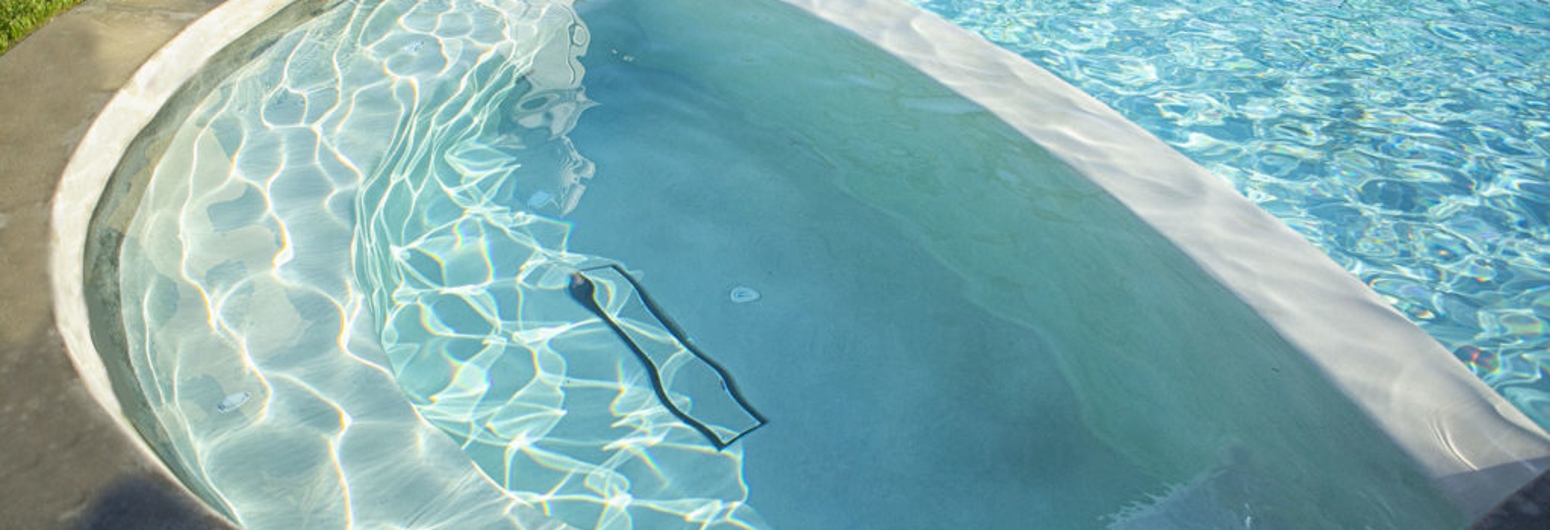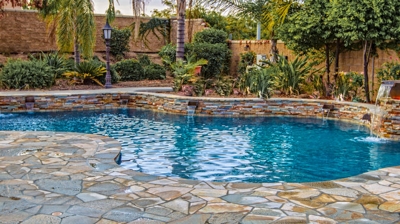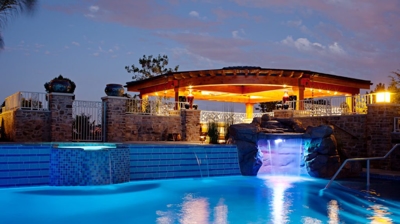We all love picturesque swimming pools that are always in pristine condition, with clear water reflecting the blue sky. Pool pumps help to keep this water safe and clean by distributing cleaning chemicals and filtering out pollutants. Pumps consume electricity, which, in turn, significantly increases your electrical bill. The question becomes, how long should you run your pool pump?
Regardless of a pump filter’s quality, water has to pass through at least once daily to remove debris, algae, and bacteria. This process is called the turnover rate. Most pools have a turnover rate of 8 hours and below, with experts saying, “Turnover rate requirements will vary by local health codes. Industry standards recommend a minimum target turnover rate of 6 hours and a minimum of 2 turnovers per 24 hours. The pool turnover rate is important for proper filtration.” It’s essential to ensure that the pump operates efficiently and remains cost-effective.
How Does a Pool Pump Work?
If pool water doesn’t move, it becomes stagnant, creating an environment that encourages algae growth and the accumulation of contaminants. Pool pumps are part of the filtration system. The pump takes in water and passes it through the filter to clean the water.
Running the pool pump throughout the season is desirable but expensive. It’s more efficient to find the turnover rate or appropriate time that’s enough to filter all the water, and filter for that amount of time each day.
How Can You Optimize the Pump’s Efficiency without Incurring Extra Costs?
The first step is determining the pump’s speed settings and flow rate.
Flow Rate
Flow rate and turnover rate are two different things. The flow rate is the amount of water that the pump can filter within a certain period. This pace is the pump’s flow rate, which you’ll find in the manufacturer’s instructions. The measurements are in gallons per hour (GPH) or gallons per minute (GPM).
Speed Settings
There are three types of pool pumps depending on the speed settings.
Single-speed Pumps
Single-speed pumps pump water at one constant speed. They cost less than other types and are easy to operate. The challenge is that there’s no option of running the pumps at lower velocities, so they consume more energy.
Two-speed Pumps
Two-speed pumps have two speed options: high and low. Lower speeds reduce energy consumption and produce less noise.
Variable-Speed Pool Pumps
Variable-speed pumps automatically adjust the speed and have multiple speed options. They are more expensive upfront, but they are the most efficient and cost-effective in the long run.
How do I Know The Best Pool Pump Type?
The duration your pump needs to run depends on the type you’re using.
Pumps with high horsepower are more powerful and need less time. However, the effectiveness of the pump also depends on the filter size.
Getting a powerful pump with a small filter will only cause damage, so purchase a pump that matches your pool’s volume.
Two-speed pumps are more effective and run for less time than single-speed pumps. Variable speed pumps are the fastest, most energy-efficient, and least noisy.
How to Calculate Pool Pump Run Time
To answer the question of how long you should run your pool pump, you need two values: the pool volume and the pump’s flow rate.
Pool Volume
Pool volume is the amount of water in your pool in terms of gallons. This number can often be found on the pool’s purchase paperwork. If it’s not there, you can calculate the pool volume depending on the pool’s shape, with all dimensions in feet.
Rectangular pool – Length by Width by Average Depth by 7.5 = Approximate Volume (Gallons)
Round pool – Diameter by Diameter by Average Depth by 5.9 = Approximate Volume (Gallons)
Oval pool – Length by Width by Average Depth by 6.7 = Approximate Volume (Gallons)
Kidney-shaped pool – (A + B) by Length by 0.45 by Average Depth by 7.5 = Approximate Volume (Gallons) A and B is the width at the widest points of the pool
Irregular-shaped pool – Longest Length by Widest Width by Average Depth by 5.9 = Approximate Volume (Gallons)
Flow Rate
The flow rate is in gallons per minute (GPM) or gallons per hour (GPH). To calculate the flow rate, use the formula:
Total Pool Volume ÷ 8 = GPH
GPH ÷ 60 = GPM
Once you know the pool volume, calculate the turnover rate. Take the pool volume and divide it by the pump’s flow rate. This gives you the time it will take to pump all the water, answering the question of how long you should run your pool pump.
When Do You Run Your Pool Pump?
A great way to save energy costs is running the pool pump during non-peak hours. These are certain times of the day when electricity costs less. Get in touch with your electric company and ask about the non-peak hours and their rates.
Another time to run your pump is after a rainstorm. Rainstorms can leave debris in the pool, so you should run the pump longer than usual to filter out the contaminants.
It is best if you also run your pump immediately after adding chemicals to disperse them. For instance, the most appropriate time to shock your pool is at night to prevent sun damage to the chemicals, which means that you’ll sometimes need to keep the pool pump running at night.
Remember that UV rays affect chlorine, so you should consider regularly running the pump during the day to minimize the sun’s impact and maintain proper chlorine levels at all times. According to the World Health Organization (WHO), standard disinfection is enough to kill the COVID-19 virus in water. Chlorine levels of about 0.5 ppm kill the virus.
Related: COVID-19 and how it Affects Your Backyard Swimming Pool
Should the Pool Pump Run Continuously?
Ideally, pool pumps should be turned over at least once daily for about 8 hours. This doesn’t mean the 8 hours must be consecutive; you can run it for a few hours and then wait to rerun it later in the day.
Consider the non-peak hours and run the pump during that time, or distribute the hours based on your availability. It doesn’t matter how long you run the pump at one time as long as you achieve 8 hours a day.
If you have many swimmers, especially during summer, it’s advisable to run the pump longer.
For your pool at home, circulating the water once a day is enough. Keep in mind that in addition to filtering the water, balancing the water chemistry is equally important. If there’s no proper balance, circulating the water will not prevent bacterial and algae growth.
Related: Tips to Keep Your Swimming Pool Clean in the Summer
Take the Plunge.
Most people dream about having a beautiful pool at home. It’s now possible to have your dream pool in any shape you wish. Get in touch with California Pools and watch your dream pool come to life.



